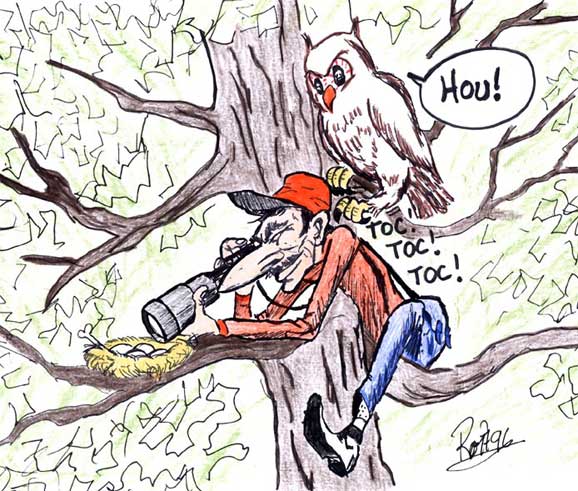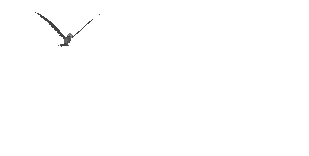|
The following recommendations aim to guarantee the wellness of the subject being
photographed, to preserve the integrity of its habitat and to assure the safety and
reputation of bird photographers.
Bird photographer code of ethics
Each place, plant or animal is unique, and the risk of undermining their integrity grow
with time and repeated human presence. In order to minimize these risks, the photographer
must call upon his good judgment at all times. Always keep in mind that human activities
(hunting, cars, communication towers, pollution and habitat destruction) already cause
enough problems for birds, and that they don't need additional disturbances.
Like the ripples from a rock in a pond, respect of this code of ethics by bird photographers
will influence others who frequent and use natural spaces. A vast diffusion of this code
of ethics will favour a better use and healthy management of fauna habitats.
Protection of the bird and its habitat

- Study the different aspects of bird behaviour and know to identify the moments when it is preferable not to interfere with their life cycle. For example, avoid disturbing them when it can disrupt nutrition or reproduction.
- Do not hound a bird with constant pursuit. When it flies away from you, it is because you are disturbing it. Use the proper equipment for bird photography. If the bird shows signs of stress, or if your presence prevents it from going about it's normal activities, back away and use a more powerful lens, or give up.
- Do not use birdcall recordings where other photographers have preceded you or will follow you.
At all times, only use recordings with restraint. Using recordings may possibly be harmful to birds during times of reproduction, or when weather conditions are difficult and they strive for survival.
A bird disrupted by a recording will often expose itself by leaving cover, and its natural vigilance towards predators can be seriously affected.
- Avoid using artificial light (flash). In addition to frightening the birds, the use of a flash can cause particular harm at night, for the dazzled birds could collide against obstacles.
- Be informed of the degree of fragility of the ecosystem you are visiting. Avoid penetrating delicate sites. Do not approach bird nests and do not damage the vegetation cover around you.
- When you photograph birds in parks, reserves or interpretation centers, remain in the paths. They are intended to limit the impact of your presence.
- When applicable, inform management or other authorities of your presence on the site and the object of your visit. Let them know your itinerary.
- If you are photographing abroad, learn the regional laws and regulations.
- Treat others with courtesy. Ask permission before joining other photographers who are already in the sector.
- Should you notice incorrect behaviour, inform the culprits with tact and courtesy. Many people do things which are harmful to birds without realising it. Report reprehensible behaviour to competent authorities. Do not argue with people who will hear of nothing. Report them.
- Before stepping onto private property, be sure to have proper authorization. Generally, owners are happy to oblige you.
- Be a role model as photographer and citizen. Educate others through your actions.
|



